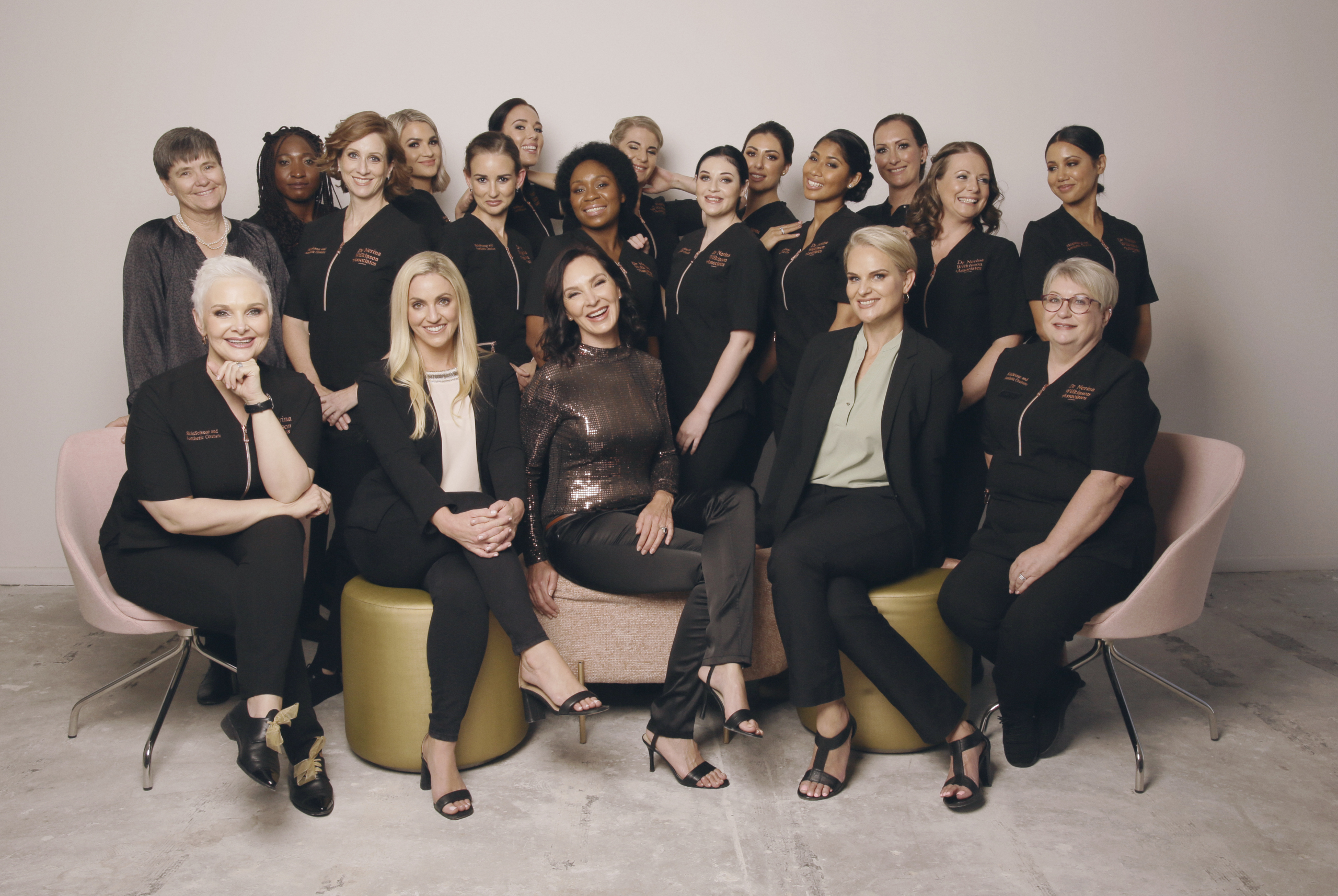3D™ MD PRP Treatments in South Africa
- Home
- /
- Specialist Skin Science Clinic in South Africa
- /
- Skin Treatments
- /
- 3D™ MD PRP Facial Treatment in South...
Stimulate skin rejuvenation through your own platelet-rich plasma (PRP)
Our 3D™ MD PRP facial treatment is our advanced version of the well-known blood facial that took Hollywood by storm.
Our 3D™ MD PRP treatment focuses on providing patients with healthy, radiant, and more youthful-looking skin. These treatments are also effective when treating pigmentation and acne scarring.
What is a PRP facial treatment?
PRP facial treatments are minimally-invasive cosmetic procedures that utilise the powerful regenerative effects of our own platelet-rich plasma (PRP).
PRP contains growth factors that stimulate the production of beneficial proteins, collagen, and elastin.
Our bespoke 3D™ MD PRP treatment improves on the normal “blood facial” treatment by including a sterile medical-grade hyaluronic acid along with a specifically chosen active ingredient to tend to your individual skin needs when injecting the platelet-rich plasma for even more improved skin rejuvenation. The PRP and active ingredients are also introduced into the skin in two ways, first by an Aesthetic Doctor using a mesotherapy technique, and then by a Skincare Specialist using a microneedling technique.
Learn more about PRP treatments and our signature 3D MD PRP treatment and book a consultation today.
Learn More
Frequently asked questions about PRP facial treatments (3D™ MD PRPs)
Our approach and signature PRP facial treatment
Our signature 3D MD PRP facial treatment
What makes our Signature 3D PRP MD Bespoke method so sought after is that we target 3 areas of the skin in one treatment session.
- The dermis: to deeply stimulate the renewal of the support structure of the skin.
- The deep epidermis: to provide essential nutrients to the skin.
- The superficial epidermis: to provide essential peptides to leave it feeling plump and hydrated.
We also include sterile medical-grade hyaluronic acid and a specifically chosen active ingredient to tend to your individual skin needs when injecting the platelet-rich plasma for even more improved skin rejuvenation.
Who is the ideal candidate for a PRP facial treatment?
Our signature 3D MD PRP facial treatment focuses on stimulating the rejuvenation of the skin, and restoring a supple, radiant glow and is especially effective in treating aging, pigmentation, and acne scarring among other skin concerns.
PRP facials offer a wide range of benefits and can help with:
- Sun-damaged skin
- Textural damage with dull/dry skin
- Fine lines and wrinkles
- Thinning hair
- Pigmentation
- Dehydrated skin
- Scarring
- Lack of skin radiance
What areas of the body can PRP treatments be performed on?
Although PRP treatments may imply this is purely a facial treatment, PRP injections can also be applied to other areas, including:
- Scalp (thinning hair)
- Neck
- Hands
- Décolletage
- Scars on body
- Female intimate areas (O-Shot)
Who is not suitable for a PRP facial treatment?
It is advised that you do not undergo PRP treatments should you be affected by any of these medical conditions:
- Cancer or metastatic disease
- An open wound with infection
- A low platelet count
- Pregnancy
- Autoimmune disease
- Diabetes
- Poor wound healing or Keloidosis
- Patients on anticoagulants
- Active skin cancer
How is our 3D™ MD PRP procedure performed?
At Dr Nerina Wilkinson + Associates we perform the 3D™ MD PRP facial treatment in a series of 4 steps:
STEP 1: Consultation phase
Dr Nerina Wilkinson + Associates’ approach is bespoke and is driven by thorough analysis and expert guidance.
We are passionate about educating our clients on safe, results-driven treatments and we, therefore, design each client’s Skincare Treatment Plan individually to deliver optimal results.
To achieve this, we start by taking detailed photographs inside our Next Motion Photo Lab. You will also undergo a computerised VISIA Skin Analysis. that objectively measures and maps your skin. This is followed by a detailed consultation with your Skincare Specialist, and an aesthetic couture doctor during which specific concerns are highlighted and discussed for a truly individualised Skincare Treatment care plan.
STEP 1: Blood collection
Your own (autologous) blood is drawn, just like when you take blood for tests at the doctor. The site of the venesection is usually a large vein on the inside of your arm and up to about 20 ml of blood is collected. Using your own blood ensures no risk of contamination or risk of transmittable diseases.
STEP 2: Centrifuge
The blood is then spun in a centrifuge to separate the red blood cells from the platelet containing plasma; this procedure takes about 10 minutes. The platelet-rich plasma is then harvested for use.
STEP 3: Injection
The platelet-rich plasma is superficially injected into the skin using a Mesotherapy technique, followed by superficial micro-needling with plasma and a medical sterile active ingredient depending on your specific skincare concern.
Who performs the treatment?
The 3D™ MD PRP is performed by both an Aesthetic Doctor and a Senior Skincare Specialist simultaneously.
How long does a PRP facial take to perform?
Both of our bespoke PRP facial treatment options – the Standard 3D MD PRP Facial (facial & neck) and our Diamond 3D MD PRP Facial (face, neck, and chest) – take approximately 120 minutes to complete.
How long does it take to see results after a PRP facial treatment?
The skin’s colour and texture improve about 1 – 2 weeks post-treatment. The stimulation and maturation of the new collagen in the skin will take up to 90 days; therefore, the best results can be expected about 3 months after the treatments.
Some patients have reported seeing visible results sooner while others still see improvement in skin quality for up to a year post-treatment.
How long do results from a PRP facial last?
The results of a PRP facial generally last around 6 – 12 months and additional treatments are required to maintain results.
How often should I go get a PRP facial treatment?
The ideal treatment cycle includes 3 – 4 treatments separated by 3 – 4 weeks. After commencing with treatments, continued improvement of the results will be visible for up to 6 months after the last treatment. Following this, we recommend maintenance treatments every 3 – 4 months should you be serious about skin rejuvenation.
3D™ MD PRP Facial: Before and After
Before a PRP facial
We are passionate about educating our clients on safe, results-driven treatments and we, therefore, design each client’s Skincare Treatment Plan individually to deliver optimal results.
To achieve this, we start with a computerised VISIA Skin Care Analysis that objectively measures and maps your skin followed by a detailed consultation with your Skincare Specialist during which specific concerns are highlighted and discussed.
HOW TO PREPARE FOR YOUR 3D MD PRP PROCEDURE
- Avoid any strong at-home facial treatments and/or exfoliation treatments the week prior to your appointment.
- Avoid sun exposure (including tanning) for five days prior to your treatment.
- Know the skincare products you are using at home, and bring a list, as having these details will assist your Skincare Specialist to make suitable product recommendations.
- Advise your Skincare Specialist regarding any medications, medical conditions, and/or past skin conditions; even over-the-counter medications can affect your skin, so it is good for us to know what may be contributing to your concerns as well as how your skin reacts to certain products.
- Should you be preparing your skin for a big event and you have never had a skincare treatment before and therefore don’t know how your skin will respond, it is recommended that you schedule an appointment six weeks before your big event with a follow-up appointment closer to the event date. This way you have time to address any negative skin reactions and get the maximum results from your treatment(s).
- Be prepared to discuss your skin concerns and goals. Your Skincare Specialist is a licensed expert who will provide you with a detailed plan to best achieve your specific goals.
- We advise against any Aesthetic procedures (including Botulinum Toxin, Facial Fillers, and Threads) 2 weeks prior to and 2 weeks after any minimally invasive skincare treatment.
On the day of preparation for a PRP facial
After a vampire facial treatment (PRP facial):
- Wait at least 45 min after the procedure before washing the face with clean water
- Apply the provided home care treatment as per your Skin Specialist’s instructions
- Avoid the sun for 48 hours post-procedure
- Continue to apply SPF 50 sunscreen daily.
Avoid taking any inflammatory medicines for at least 2 weeks post-procedure; this allows for optimal collagen formation.
The treatment includes a bespoke aftercare pack consisting of relevant product mini’s to aid the recovery of your skin post-treatment.
How long is the recovery period/downtime for a PRP facial procedure?
Swelling, redness, and bruising are expected but will settle within 24 hours. Arnica, either as a topical cream or in tablet form, will help heal any persistent bruising.
Due to the mild skin exfoliation post-treatment, the skin’s color and texture are improved about 1 – 2 weeks post-treatment. The stimulation and maturation of the new collagen in the skin will take up to 90 days; therefore, the best results can be expected about 3 months after the treatments.
What does a PRP facial treatment cost in South Africa?
The Signature 3D MD PRP procedure costs R 7 950 and focuses on the face and neck, taking approximately two hours to complete.
This option includes a bespoke aftercare pack with relevant mini-products to aid your skin’s recovery post-treatment.
Our Diamond 3D MD PRP treatment costs R 8 950 and focuses on the face, neck, and chest, taking approximately two hours to complete.
This option also includes a full-size Mesoestetic Stem Cell Serum and a bespoke aftercare pack consisting of mini products to aid the recovery of your skin post-treatment.
Is a PRP facial treatment safe?
When a qualified Skincare Specialist performs this treatment in a sterile medical environment the risks diminish significantly. Our 3D MD PRP treatment can be safely performed on all Fitzpatrick skin types.
What are the possible risks and complications associated with a PRP facial treatment?
If prone to fever blisters it is possible to experience a fever blister break out after skin needling due to inflammation in the skin. It is important to inform your skin care professional if you have a history of fever blisters, as a fever blister medication needs to be started 3 days prior to the treatment to prevent activation of the Herpes Simplex virus.
Rare adverse effects such as severe post-treatment erythema, sterile pustules, post-inflammatory hyperpigmentation, severe skin peeling, and crusting can be evident. Prolonged photosensitisation of the skin and severe erythema have been reported up to 14 days post-treatment.
While the majority of people do not experience these complications, it is important to be aware of these risks and discuss them with your Skincare Specialist in advance.
PRP Facial Side Effects
Swelling, redness, and bruising are expected but will settle within 24 hours. Arnica, either as a topical cream or in tablet form, will help heal the bruising. Should you experience any signs of infection in the treated area within 24 hours, please contact your treating doctor.
Where are PRP facial procedures performed in Cape Town?
PRP facials are usually performed in private cosmetic clinics and other medical clinics that have a focus on aesthetic surgery.
Dr. Nerina Wilkinson + Associates is a private, high-end, luxury clinic located in the prestigious V & A Waterfront in Cape Town where Dr. Wilkinson founded the House of Aesthetic Couture and Skin Science. Your 3D MD PRP procedure will be performed at Dr. Nerina Wilkinson’s clinic.
What type of anesthesia is used when performing a PRP facial treatment?
Topical anaesthesia is applied during PRP facials, taking place about 30 minutes before micro-needling commences. Oral painkillers are also made available to those with increased sensitivity (but are optional).
Do PRP facials really work?
In short, YES. What makes our Signature 3D PRP MD Bespoke method so sought after is the fact that we target 3 areas of the skin in one treatment session for optimal results, with results visible after just one session. We target:
- The dermis: to deeply stimulate the renewal of the support structure of the skin.
- The deep epidermis: to provide essential nutrients to the skin.
- The superficial epidermis to provide essential peptides to leave it feeling plump and hydrated.
Is PRP better than (injectable) neurotoxins?
PRP treatments are different from neurotoxin (botulinum toxin) treatments and are indicated for different concerns. PRP treatments are effective in treating sun-damaged skin, textural damage with dull/dry skin, fine lines and wrinkles, thinning hair, pigmentation, dehydrated skin, scarring, and lack of skin radiance, whereas neurotoxin treatments (also known as Muscle Relaxing Injections) is a non-surgical injectable procedure used to relax dynamic muscles to soften and reduce unwanted lines of aging.
What is the difference between a PRP facial and a normal "blood" facial?
A PRP facial and vampire facial are essentially the same procedure, it is only the technique that differs. What makes our Signature 3D PRP MD Bespoke method so sought after is the fact that we target 3 areas of the skin in one treatment session for optimal results, with results visible after just one session.
What are the benefits of a PRP facial?
PRP facials provide numerous benefits for facial skin and skin around the neck and decolletage. We have covered most of them throughout this page, but to summarise the benefits of PRP facials:
- Minimally invasive procedures
- Result in rejuvenated youthful-looking skin
- Are effective when treating pigmentation and acne scarring
- Stimulate the production of essential proteins that support good skin health (elastin, collagen, and humectant hyaluronic acid)
- Improves the skin in just 90 days, and the results last for around 12-18 months.
To find out how PRP (Platelet-rich Plasma) facials may help you solve personal skin concerns, book a consultation to start your aesthetic couture journey with Dr. Nerina Wilkinson + Associates.
How painful is a PRP facial?
Before the 3D MD PRP facial, we apply a topical anaesthetic to the treatable area to help increase comfort. Painkillers are also offered to those with increased sensitivity (but are optional), making this treatment as comfortable as possible.
The
Procedure
STEP 1: Consultation phase: At Dr Nerina Wilkinson + Associates we focus on educating our clients about safe, results-driven treatments and we, therefore, design each client’s Skincare Treatment Plan individually to deliver optimal results.
To achieve this, we start all treatment journeys with a personalised skin consultation and a computerised VISIA Skin Analysis that objectively measures and maps your skin. Bespoke advice and recommendations are then made for a truly individualised, results-focused plan.
Step 2: The blood collection: Before your PRP treatment your own (autologous) blood is drawn, just like when you take blood for tests at the doctor. The site of the venesection is usually a large vein in your elbow and up to about 20mls of blood is collected.
Step 3: Centrifuge: The blood is then spun down in a centrifuge to separate the red and white blood cells from the platelet containing plasma. This procedure takes about 10 minutes. The platelet-rich plasma is then harvested. Using your own blood ensures no risk of contamination or risk of transmittable diseases.
Step 4: Injection: The platelet-rich plasma (PRP) is then injected very superficial into the skin using a mesotherapy technique. It can also be introduced with a micro-needling device.
It is advised that you do not undergo PRP treatments should you be affected by any of these medical conditions:
Cancer or metastatic disease
An open wound with infection
A low platelet count
Pregnancy
Autoimmune disease.
Diabetes
Poor wound healing or Keloidosis.
Patients on anti-coagulants.
Active skin cancer.
Wait at least 45 min after the procedure before washing the face with clean water, and apply a fast skin repair cream followed by an SPF 50 Sunscreen and makeup
Avoid the sun for 48 hours post-treatment.
Continue with a good sunscreen SPF 50 daily.
Do not take any inflammatory medicines for at least 2 weeks after the treatment. This allows for optimal collagen formation.
Swelling and redness is normal but will settle down within 24 hours.
Bruising is normal, but will go away after 2-3 days. Arnica, either as a topical cream or in tablet form, will help heal the bruising.
If you experience infection in the treated area within 24 hours, please contact your treating doctor.
Similar
Treatments
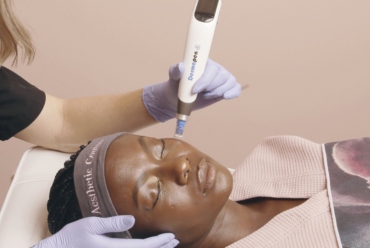
3D Medical Skin Needling
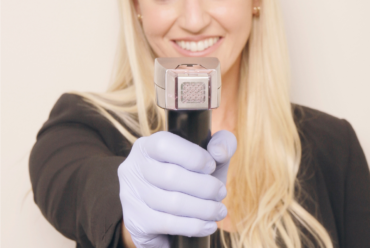
Morpheus Enhance
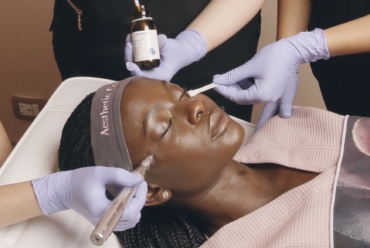
3D Bespoke Treatment
Meet
The Cosmetic Surgery Team
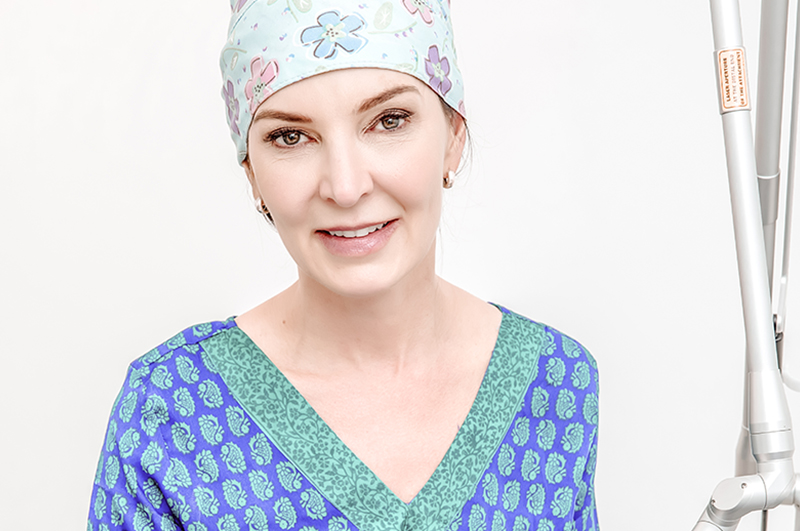
About Dr Nerina Wilkinson FCS (Plast SA)
Dr Nerina Wilkinson and her team of aesthetic doctors and skincare specialists are considered the “go-to” expert for patients seeking a highly personalised, bespoke facial rejuvenation treatment plan. We take our clients on the ultimate curated journey to beauty and confidence.
Skin Science & Aesthetic Couture
As an all-female team, we understand the importance of naturally beautiful-looking skin.
Known as leaders in the skincare industry, we have pioneered industry-changing rejuvenation techniques and signature procedures such as 3D™ Microneedling, Forma HydraLyft™, and TriDerma™ Bespoke.
